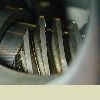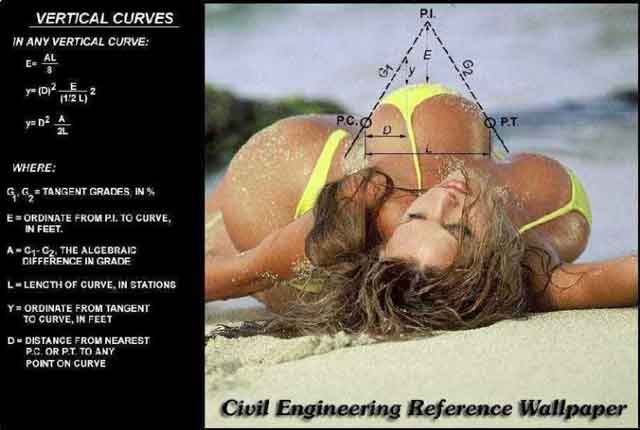| Author | Message | ||
Henrik  |
I need to find/purchase a couple of AC-to-DC transformers for some halogen lighting I bought in Europe. Do any of you have info/links for a good place to buy. I'll need one for a ceiling light with 7 x 10W 12V halogen bulbs and one that will handle 4 x 20W 12V lights. How do I calculate what amperage I need? Does the amperage of the transformer need to be "spot on" or will "more than needed" do? The 4 x 20W lights are individual fixtures (each came with a Euro transformer) that I want to run off of one transformer. Should I connect them in series or in parallel? Thanks Henrik | ||
Reepicheep  |
Watts = Amps * Volts or Watts / Volts = amps. Watts are watts. You need a 12V transformer capable of ((7 * 10W) + (4 * 20W)) or 150 watts sustained. Make sure the transformer is rated for that as sustained, and not "peak" or "transient". I seem to recall Home Depot has 12V track lighting, so I bet they have the transformers there. You will connect them all in parallel to the 12V output of your transformer. 150 watts is a "big" transformer for normal home stuff. If you can't find a normal transformer that can handle that, or have special space or sound constraints, ping me offline and we can figure something creative out (for example a laptop power supply is small and quiet and can likely deliver 50 watts or more at 12V DC). You could also get the euro transformer, and a single 110 to 220 transformer to put in front of that. | ||
Reepicheep  |
Oh, and watch the AC or DC aspect of things. 12V AC does not equal 12V DC, and unfortunately 24V AC does not even equal 12V DC, more .606 * 12V (if I am remembering constants for more then a decade ago). That being said, there is no reason the halogen lights could not run on stepped down AC voltage as well, see what they ask for and make sure you are getting what they expect. The transformer will be rated as AC output, which will need to be something like 20V to be able to create 12V DC with a full wave rectifier bridge. Or the "transformer" could actually be a fully regulated supply, that already generates the 12V DC regulated output. | ||
Reepicheep  |
One more oh yeah... overkill is fine for both amps and watts, but not for volts. | ||
Cataract2 |
Eh gad man. If I recall Halogen give off some good light but also some good amounts of heat. Trying to save on the heating and lighting cost this winter? | ||
Henrik  |
Thanks Bill. I *knew* I could count on you for something like this  FIrst; I'll need 2 transformers; 1 for the 70W light and 1 for the 80W total lights. They'll need to run off net power 110V and which should (I think/hope) be transformed down to 12 V DC?? The transformers that came with the little lights were the "plug into the wall" type bricks. The indications on them were something like this: Pri: 230 - 240V ~ 50 Hz Sec: 12V ~ 1.67A 20 VA Unfortunately I don't have room to use the Euro trafo with a 110 - 220 transformer in front. Thanks again. I'll go check out Home D. Henrik | ||
Henrik  |
Ryan  Didn't think the low voltage halogens gave off that much heat?? I had one of those old torchiere type uplights with the long "bar style" halogen bulb, which would set things ablaze if it got too close. Didn't think the low voltage halogens gave off that much heat?? I had one of those old torchiere type uplights with the long "bar style" halogen bulb, which would set things ablaze if it got too close. Henrik | ||
Reepicheep  |
Geesh. Everyone knows good "Bill Bait" when they see it. I am SOOOO predictable  I had one of those torch lights set a pretty big moth on fire once. Quite spetactular, though it stunk up the place. 20 watt halogens will be more or less just as hot as a 20 watt non halogen. They won't be bad. Even a low power normal bulb is 60 watts. No worries there. 20 VA is 20 Volt Amps. And as I read that transformer, it is putting out 12 Volts AC, not 12 volts DC. That is an important difference. So I think the total power is something like .606 * 20 watts, i.e. less then 20 watts. AC, being a sine wave, is not volts time amps like DC, but rather the area under the sine wave curve (volts) times amps. I think the 60Hz AC fudge factor works out to .606, but that was a long time ago. Just get 20VA or 20 watts or better  Blake can do the integration and derive it for us if he is so inclined  Anyway, at least the transformer you posted the numbers for above, sounds like it is 12V AC, not 12V DC, which makes sense for me. Converting the AC to DC would do absolutely nothing to help the lights, and would just add more cost and things to break. Just make sure both sets of lights want the same voltage (12V AC, which is different then 12V DC), and make sure the power capacity of the transformer feeding them is sufficient for the overall load. Euro lights are the coolest! | ||
Reepicheep  |
Grrr. You *knew* I would go look it up, didn't you! You knew it!  The correction factor for 60 Hz AC to watts is .707, not .606. Close, but no cigar. So the 20 VA transformer is likely capable of handling 20 * .707 or 14.14 watts. So find a transformer rated for either 20VA or more, or 14.14 watts or more, whatever they mark it as, multiplied by the number of original euro transformers you are replacing. (Message edited by reepicheep on January 04, 2005) | ||
Blake |
Henrik, Are you not yet finished with that?   Heat from light bulbs, interesting topic. A 70W light bulb, no matter what configuration. puts out right at about 70W of heat. A 70W halogen bulb puts out a lot more light than a conventional 70W incandescent bulb, and a 70W fluorescent bulb puts out WAY more light than a 70W incandescent bulb. But the amount of heat is all about the same. What is different is the concentration of that same amount of heat and thus the resulting surface temperatures of the bulb or its enclosure. The halogen bulbs/enclosures are often very compact resulting in their heat energy being much more concentrated. Fluorescent bulbs in contrast require large bulbs and large enclosures so the same 70W of heat is much less concentrated resulting in much lower temperatures. Interesting stuff. I really like the new fluorescent bulbs that are designed to replace conventional incandescent bulbs. You get the same amount of light for a fourth of the energy consumption and thus also get a fourth of the heat which in Texas is most often having to be cooled by the air conditioner. | ||
Court |
>>>the area under the sine wave curve (volts) times amps. Power factor? By the way if you have a sined edition they are worth more than the unsined. You secant what I mean? | ||
Road_thing  |
Court, you're getting off on a tangent, there, buddy... | ||
Reepicheep  |
Does not take much to get the two of you all obtuse, does it? | ||
Blake |
Acute observations, nonetheless. | ||
Ingemar  |
Pfew! For a moment I thought you had bought new headlights for your buell. I'm like where the hell is he gonna put the trafo's??? Initially I missed the "one for a ceiling" part...  | ||
Cataract2 |
Love those new small fluorescent bulbs. Replaced all my old incandescent bulbs in my room with them. Save a few bucks with them at least. | ||
Bomber  |
yikes -- my brain is hurting again! | ||
Aaron |
Power factor is a reference to phase shift with inductive loads, where the voltage leads the current. .707 (the square root of one-half) gets multipled by the "peak" of a sinusoidal AC voltage to give the RMS (root mean square) voltage, which is the equivalent of the DC voltage. That factor only works for sine waves, but I don't think frequency plays into it, not if I remember AC Theory 101 correctly. Wave shape certainly does, though, and the square-root-of-one-half factor is only applicable to sine waves. A "True RMS" voltmeter gives the RMS voltage for other wave shapes. Most AC voltmeters just give RMS for a sine wave. Back in the old days, a True RMS voltmeter used to work by measuring the power dissipated in a resistor, through the heat given off. In all cases, regardless of the waveform, the RMS voltage is the square root of the power dissipated. But I suspect modern meters digitize and integrate the waveform. 99% of the time when we talk AC voltages of sine waves, we're talking RMS. For example, the 120VAC from your wall socket is 120VAC RMS. It's actually more like 170VAC peak. I suspect the transformer ratings are RMS on both sides. Anyway, one thing that ought to be pointed out is that the AC output of a transformer is unregulated and the windings have internal resistance. So draw less than the rated current and you're likely to get somewhat more than the rated voltage. And that can be bad. In the ideal world, you rectify and regulate it before going to the load. | ||
Firemanjim  |
Does it have to be cosined?? | ||
Road_thing  |
Come on now, gents, let's be equilateral about this... | ||
Reepicheep  |
Did I mention that "Machines and Power" was one of two "D's" I got in my otherwise decent GPA in my undergraduate classes, and one I was happy to have escaped with? *shudder* | ||
Henrik  |
"Bill Bait" ... ROTFL - but it sure was though  Are you not yet finished with that? Blake ... you're a funny guy ... veeery funny ... Aaron - now you're making *my* head hurt. Not sure I understood *any* of that  But thank you anyway But thank you anyway  Ingemar: This is the ceiling lamp, and 4 of these is what I need the 80W for. Not sure they'd really go with the minimalistic design of the Buell  ... Btw. in Denmark those lamps cost a fraction of the price listed on that site. What a rip-off. ... Btw. in Denmark those lamps cost a fraction of the price listed on that site. What a rip-off. The rest of youse - your minds work in scary ways  Now; Would any of these fit the bill: for the 70W lamp: http://www.expresslighting.com/eltran.html http://www.ylighting.com/entran12out11.html For the 80W lamps: http://www.lightingfx.com/item--105W-Transformer--44 http://www.expresslighting.com/eltran122.html Henrik | ||
Reepicheep  |
http://www.expresslighting.com/eltran.html \ Yup, good for the 70 watter. http://www.lightingfx.com/item--105W-Transformer--44 Yup, good for the 80 watter, and in fact good for the 70 watter as well, if you wanted two identical ones (maybe cheaper shipping, have one extra spare for the two in use, whatever). http://www.expresslighting.com/eltran122.html Yup. For any of them. http://www.ylighting.com/entran12out11.html Yup, for the 70 watters. They run at a lot higher frequency then I expected, some up to over 20kHz. If it were me, I would just get a couple of the bigger ones from the same vendor and use each with each light. You want to make sure you are between the minimum wattage and maximum wattage. The more margin you have up top, the longer the service life of the transformer will likely be for for your application. The only disadvantage to this might be the inability to use a dimmer down past a particular point, I don't know if that would be the case or not. And on a final note (yeah, right) a lot of those units are not actually transformers, they are simply switching AC power supplies (a good thing). They call them "electronic transformers". That also means that most of them would probably happily eat 220V or 120V inputs and still produce the same regulated 12V output. The heavily labored point I am trying to make is that if your fixtures came with these same sort of "electronic transformers" already, they would likely work happily with standard US line voltages. (Message edited by reepicheep on January 05, 2005) | ||
Road_thing  |
Scary, Henrik? We're just trying to figure all the angles...  | ||
Newfie_buell  |
Angles and Tangents: Calculate this boys!!!!!  I only posted seeing this thread was electrifying!!!! | ||
Henrik  |
Thanks Bill! The reason I'm looking for a smaller unit for the 70W application, is that I need to "hide" it in a ceiling box, and the higher W transformers are too big. Also, the ceiling light is the one I'm using an electronic dimmer on. According to the descriptions, it should work though. I did try the transformer that came with the chandelier. It worked - in so much as the bulbs lit up. But they came no where near full light. Not sure why. I'm sure though, that it's an electronic transformer. Not much of a coil in there at all?? Thanks again all for your help. Henrik | ||
Reepicheep  |
Thats enough Road Thing, you are 180 degrees out of line continuing this pun thing! Your tangents are the opposite of my adjacent posts, and I think it's a sin. Oh geesh. Where are the custodians when you need them.  | ||
Reepicheep  |
Maybe it thinks you are on Euro voltage, but have the dimmer on 50%. That would cause it. Come to think of it, if any of these "electronic transformers" work with a dimmer (as they claim) I don't know how they could work with both Euro and US voltages. Hmmm. If you want to get creative, you might be able to pop open the electronic transformer you have. There might be a single component or a jumper in there that could tweak it to work with US voltages. It might be an unpopulated jumper on the internal PC board. | ||
Court |
>>>but have the dimmer on 50% That's uncalled for ....talking about my friend like that! | ||
Henrik  |
jumper in there that could tweak it to work with US voltage I've had it open, but didn't immediately see anything that would be a quick fix. I'll take another look. Jumpers I can handle  not so sure about swapping out components. not so sure about swapping out components. That transformer btw. is also it's own dimmer and has touch-detect on-off-dim-brighten circuitry as well. About the size of a can of chewing tobacco. Pretty amazing stuff. But it may be that all the electronics interfere with my in-wall switch/dimmer. Court; thanks  Henrik |